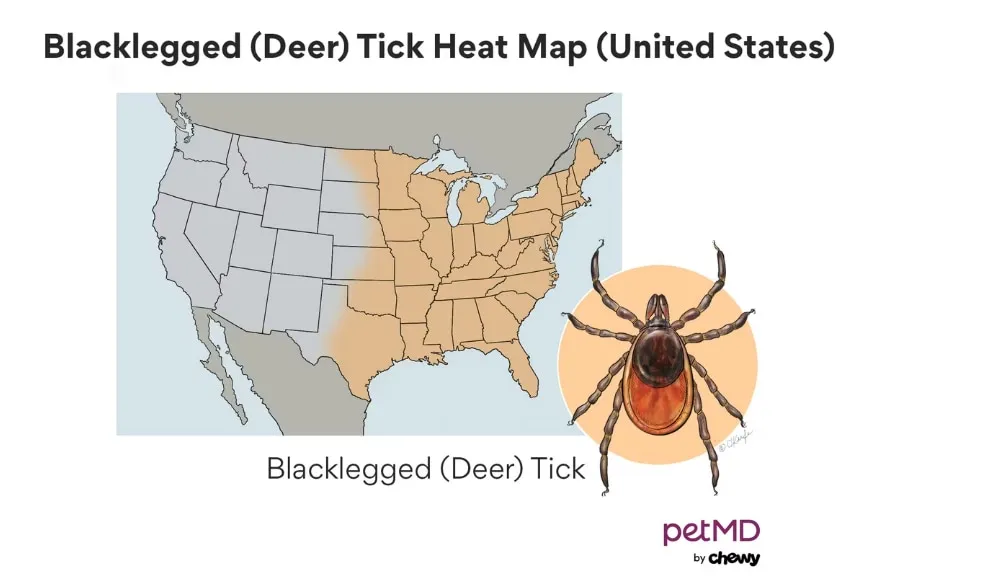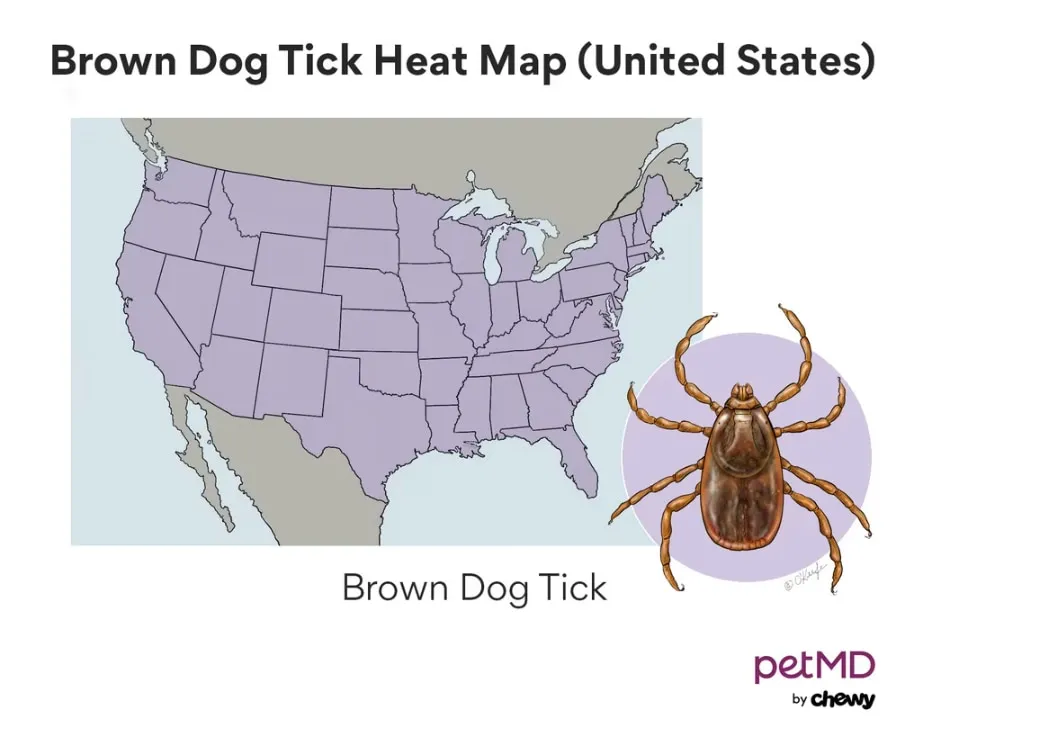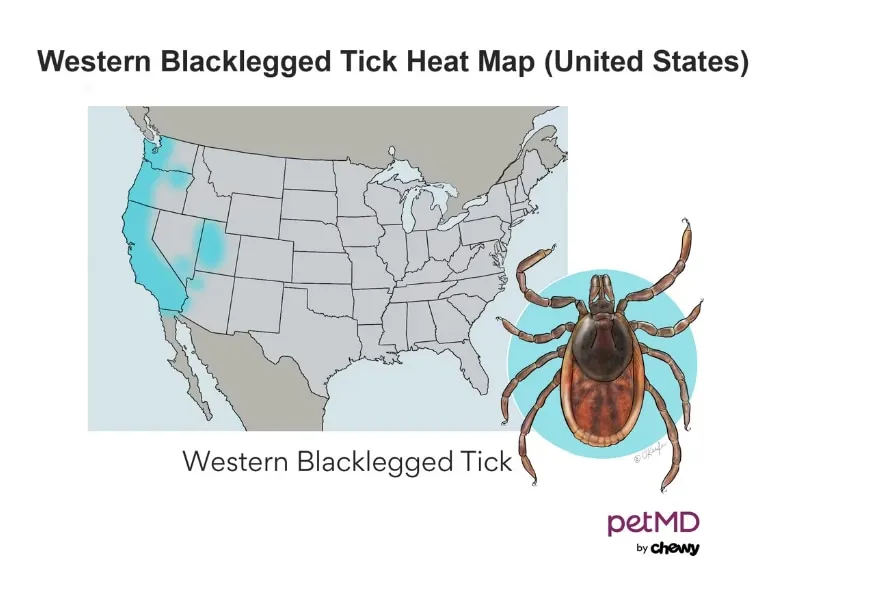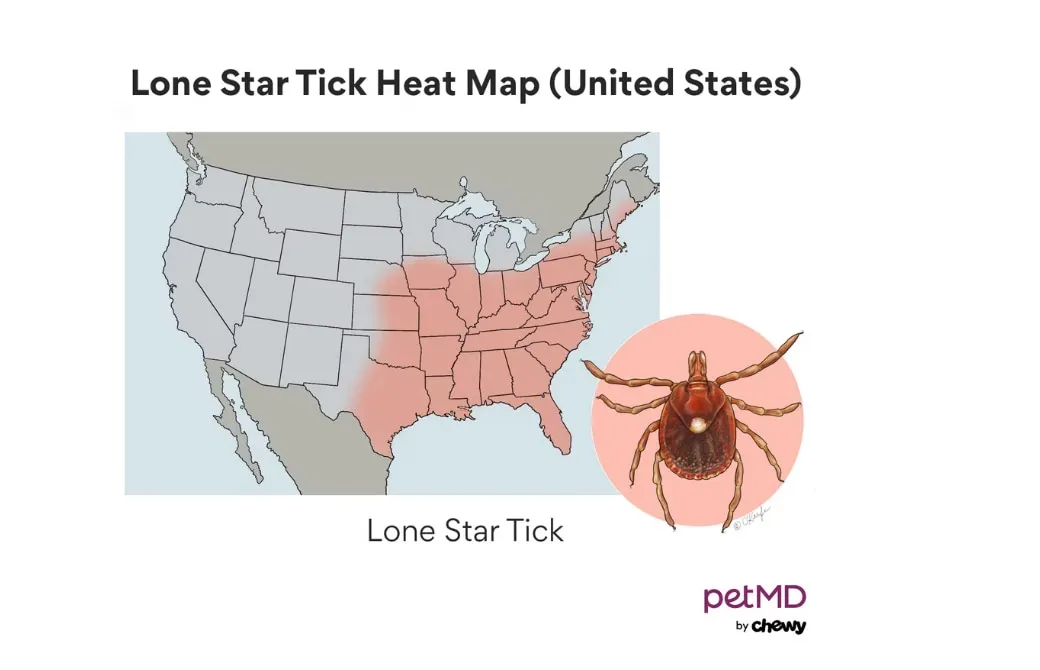Preventative care is paramount for maintaining your dog’s health and happiness, and among the most effective strategies is the consistent use of monthly flea and tick preventatives. These tiny parasites pose significant threats, ranging from uncomfortable itching to life-threatening diseases, underscoring the importance of vigilant protection for our beloved canine companions. Among the myriad options available, Chewable Flea And Tick Meds For Dogs have emerged as a highly popular and convenient choice for pet parents seeking reliable and easy-to-administer protection. This guide will delve into the critical aspects of these oral medications, helping you make informed decisions to safeguard your dog’s well-being.
Why Year-Round Flea and Tick Prevention is Essential for Your Dog
Fleas and ticks are external parasites, or ectoparasites, that survive by biting their host and feeding on blood. While their presence alone is irritating, the health repercussions for your dog can be severe. Flea bites can trigger intense allergic reactions, leading to dermatitis, anemia in severe infestations (especially in puppies), relentless itching, and secondary skin infections. Tick bites carry an even more sinister threat, capable of causing infections, abscesses, paralysis, and in extreme cases, even death.
Beyond these direct impacts, these unwelcome guests are notorious for harboring and spreading a variety of diseases to dogs, including Lyme disease, Anaplasmosis, Ehrlichiosis, and Rocky Mountain Spotted Fever. Alarmingly, some of these zoonotic diseases can also transmit to humans, making robust parasite prevention a critical component of public health within your household. Therefore, starting flea and tick prevention when your dog is around 8 weeks old and maintaining it year-round throughout their life is not merely a recommendation but a necessity for truly effective flea and tick protection.
Understanding Different Flea and Tick Prevention Methods
The market offers a diverse range of products designed to keep your dog free from parasites. These solutions utilize various active ingredients and mechanisms, functioning as pesticides, repellents, or growth inhibitors to target pests at different life stages and prevent infestations. Products typically come in several forms: topical liquids applied to the skin, collars, shampoos, and oral medications. While each method has its merits, chewable flea and tick meds for dogs have gained considerable traction due to their convenience and effectiveness. Some combination products may also offer additional protection against heartworms, skin and ear mites, and intestinal parasites, offering a comprehensive parasite treatment for dogs.
The Rise of Chewable Flea and Tick Medications for Dogs
Oral flea and tick preventatives, often formulated as palatable chewable tablets, represent a significant advancement in canine parasite control. These medications work systemically, meaning the active ingredients are absorbed into your dog’s bloodstream. When a flea or tick bites your treated dog, they ingest the medication and are killed. This method offers several distinct advantages:
- Convenience: Many dogs readily consume these tablets as a treat, simplifying administration for pet parents.
- No Residue: Unlike topical treatments, there’s no liquid residue on your dog’s coat, eliminating concerns about children or other pets coming into contact with the product before it dries.
- Water-Resistant: Chewables are unaffected by bathing, swimming, or rain, ensuring continuous protection regardless of your dog’s activities.
- Broad-Spectrum Protection: Many chewable options offer comprehensive protection against multiple types of parasites, including fleas, various tick species, and often heartworms and intestinal worms.
When considering chewable flea and tick meds for dogs, it’s important to understand the active ingredients. A common class of drugs found in many modern chewables is isoxazolines (e.g., afoxolaner, fluralaner, sarolaner, lotilaner). These compounds are highly effective against fleas and ticks by interfering with their nervous system. While generally safe, they should be used with caution in dogs with a history of seizures or neurological disorders, a point that should always be discussed thoroughly with your veterinarian.
Key Factors to Consider When Selecting a Chewable Flea and Tick Medication
Choosing the right chewable flea and tick meds for dogs involves more than just picking a brand. A thorough discussion with your veterinarian is crucial to ensure the product is a good fit for your individual dog. Here are key factors to review:
Dog’s Age and Weight
Flea and tick preventatives are formulated with specific dosage guidelines based on a dog’s age and weight. Using a product outside of these ranges can be ineffective or dangerous. Most chewables have a minimum age requirement (typically 8 weeks) and precise weight brackets. Always double-check the product label and consult your vet, especially for puppies or very small breeds.
Specific Parasite Protection Needed
Evaluate your dog’s risk profile. Do you primarily need protection against fleas, or is a broader spectrum encompassing various tick species, heartworms, and intestinal worms (like roundworms, hookworms, and whipworms) more appropriate? Many chewable flea and tick meds for dogs now offer comprehensive protection against multiple parasites, providing an integrated approach to canine health.
Geographic Location and Local Parasite Prevalence
Different regions host varying populations of fleas and ticks, as well as specific tick-borne diseases. Resources like the Companion Animal Parasite Council (CAPC) provide valuable, up-to-date data on local parasite prevalence. Identifying the predominant parasites in your area ensures that your chosen preventative offers targeted and effective protection.
 Map showing regional prevalence of specific dog parasites across the USA.
Map showing regional prevalence of specific dog parasites across the USA. Companion Animal Parasite Council data illustrating flea infestation risk by state.
Companion Animal Parasite Council data illustrating flea infestation risk by state. Geographic distribution of common tick species affecting dogs.
Geographic distribution of common tick species affecting dogs. Data visualization of regional variations in dog parasite activity for informed prevention.
Data visualization of regional variations in dog parasite activity for informed prevention.
Dog’s Lifestyle and Exposure to Outdoors
Consider where your dog spends their time. Dogs that frequent dog parks, hiking trails, wooded areas, or even overgrown backyards face a higher risk of exposure to fleas and ticks. Even if your dog is primarily indoors, fleas can hitch a ride on clothing or other pets. Veterinarians consistently recommend year-round prevention for all dogs, regardless of their indoor or outdoor access.
Pre-existing Medical Conditions and Breed Sensitivities
Certain breeds, such as Collies, Australian Shepherds, and Shetland Sheepdogs, may carry a gene mutation called MDR-1, which affects their ability to metabolize certain medications. While many modern parasite preventatives are tested for safety in MDR-1 positive dogs, it’s essential to inform your veterinarian about your dog’s breed and any known sensitivities. Additionally, dogs with a history of seizures or neurological diseases should use isoxazoline-class drugs with extreme caution, as these medications may lower the seizure threshold in susceptible individuals. Always disclose your dog’s full medical history to your vet.
Palatability and Administration
The effectiveness of any medication hinges on successful administration. Thankfully, most chewable flea and tick meds for dogs are formulated to be highly palatable, resembling a treat. However, some dogs can be picky. Monitor your dog to ensure they consume the entire tablet and do not regurgitate it before absorption. If your dog struggles with pills, discuss alternative forms or flavors with your vet.
Frequency of Dosing
Most chewable flea and tick preventatives are administered monthly, but some are effective for longer durations (e.g., quarterly). Ensure you understand the dosing schedule and adhere to it strictly to maintain continuous protection. Missing a dose can leave your dog vulnerable to parasites.
Prescription vs. Over-the-Counter Chewable Flea and Tick Meds
When exploring chewable flea and tick meds for dogs, you’ll encounter both prescription and over-the-counter (OTC) options.
Over-the-Counter (OTC) Flea and Tick Products
OTC preventatives do not require a veterinarian’s prescription and are widely available online and at pet supply stores. While convenient, it’s still crucial to consult your veterinarian before using any OTC product. They can confirm its safety and effectiveness for your specific dog, ensuring it provides adequate protection against local parasites. For dogs experiencing symptoms like severe itching, it’s important to differentiate between a simple infestation and underlying conditions, which might require more than just OTC options, potentially including dog itching relief.
Prescription Flea and Tick Products
Prescription chewable flea and tick meds for dogs require authorization from your veterinarian. These products often contain more potent or broader-spectrum active ingredients and typically undergo more rigorous safety and efficacy testing. While they may carry a slightly higher cost, most veterinarians recommend prescription options due to their enhanced effectiveness and safety profiles. Your vet can provide tailored advice, considering your dog’s health, lifestyle, and regional parasite threats, to select the most appropriate prescription option.
Popular Chewable Flea and Tick Medications for Dogs: A Detailed Overview
Here’s a closer look at some of the popular chewable flea and tick meds for dogs, alongside a brief mention of effective topical alternatives for those who prefer them.
Bravecto
Bravecto is a popular chewable tablet (also available as a topical solution) containing fluralaner, an isoxazoline-class drug. It’s renowned for its long-lasting efficacy, killing fleas within two hours and ticks within 12 hours, providing protection for up to 12 weeks (3 months). Bravecto is also effective against demodectic, sarcoptic mange, and ear mites. As an isoxazoline, it should be used with caution in dogs with a history of seizures, epilepsy, or neurological disorders. It’s suitable for dogs and puppies 8 weeks of age and older, weighing at least 4.4 pounds.
Comfortis
Comfortis is a chewable tablet that contains spinosad, an insecticide effective solely against fleas. It’s fast-acting, beginning to kill fleas within 30 minutes of administration. Comfortis is typically administered monthly and is approved for dogs and puppies 14 weeks of age or older, weighing over 5 pounds. This option is ideal for dogs needing targeted flea control without tick protection.
Credelio
Credelio is a monthly chewable tablet featuring lotilaner, another isoxazoline-class drug. It’s effective against fleas and ticks, starting to kill fleas within four hours. Credelio is approved for dogs and puppies 8 weeks and older, weighing more than 4.4 pounds. Similar to other isoxazolines, caution is advised for dogs with a history of seizures or neurological conditions.
Credelio Quattro
Building upon Credelio, Credelio Quattro is a comprehensive monthly chewable tablet. It combines lotilaner (for fleas and ticks) with moxidectin (for heartworms, hookworms, and roundworms), praziquantel (for tapeworms), and pyrantel (for hookworms and roundworms). This makes it one of the broadest-spectrum chewable flea and tick meds for dogs, offering protection against six types of parasites. It’s available for dogs and puppies 8 weeks of age and older, weighing at least 3.3 pounds. Like Credelio, it requires caution in dogs with a history of neurological issues. This product represents a strong contender for integrated worm, tick, and flea solutions.
Nexgard
Nexgard is a monthly beef-flavored chewable tablet containing afoxolaner, an isoxazoline. It is effective against fleas, deer ticks, American dog ticks, brown dog ticks, and Lone Star ticks. Nexgard begins killing fleas within four hours and ticks within 48 hours. It also has extra-label uses for sarcoptic and demodectic mange. It’s approved for dogs and puppies 8 weeks or older, weighing more than 4 pounds. As with other isoxazolines, use with caution in dogs with a history of seizures, epilepsy, or neurological disorders.
Simparica Trio
Simparica Trio is a powerful monthly chewable tablet that combines three active ingredients: sarolaner (an isoxazoline for fleas and ticks), moxidectin (for heartworms and intestinal worms), and pyrantel (for roundworms and hookworms). It begins killing fleas and ticks within 12 hours and is also used extra-label to treat demodectic mange, sarcoptic mange, and ear mites. Simparica Trio is approved for dogs and puppies 8 weeks of age and older, weighing more than 2.8 pounds. Due to sarolaner, it should be used with caution in dogs with a history of seizures or neurological conditions.
Trifexis
Trifexis is a monthly chewable tablet that provides protection against fleas, heartworms, hookworms, roundworms, and whipworms. Its active ingredients are spinosad (for fleas) and milbemycin oxime (for heartworm and intestinal worms). It’s fast-acting against fleas, beginning to kill them within 30 minutes. Notably, Trifexis does not provide protection from ticks. It’s suitable for dogs and puppies 8 weeks of age or older, weighing over 5 pounds.
Topical Alternatives (Brief Mention)
While this guide focuses on chewable options, it’s worth noting that several effective topical solutions exist for pet parents who prefer them. Products like Advantage II (fleas only), Advantage Multi (fleas, heartworm, mites, worms), Frontline Gold/Plus/Shield (fleas, ticks, lice, some repel mosquitoes/flies), K9 Advantix II (repels and kills fleas, ticks, mosquitoes, lice, flies), Onguard Plus (fleas, ticks, sarcoptic mange, lice), Seresto collar (long-lasting fleas and ticks), and Vectra 3D (repels and kills fleas, ticks, mosquitoes, lice, flies, some mites) offer excellent protection. However, some topical products, particularly those containing permethrin (like Frontline Shield, K9 Advantix II, Vectra 3D), are highly toxic to cats and must be used with extreme caution in multi-pet households. For those interested in non-chemical options, exploring natural flea and tick repellents can also be beneficial as a complementary approach.
Potential Side Effects and What to Do
While generally safe and effective, all medications carry a risk of side effects. With chewable flea and tick meds for dogs, common mild side effects can include vomiting, diarrhea, lethargy, or loss of appetite. More serious adverse reactions, though rare, can occur. It’s vital to monitor your dog closely after administering any new medication.
If you observe any concerning symptoms or an allergic reaction (e.g., swelling, severe itching, difficulty breathing), contact your veterinarian immediately. Always review the product’s package insert for a complete list of potential side effects and precautions. If your dog has a history of seizures, and your vet prescribes an isoxazoline-class medication, be extra vigilant for any changes in neurological behavior.
Conclusion
Protecting your dog from fleas and ticks is a fundamental aspect of responsible pet ownership, safeguarding both their health and your household. Chewable flea and tick meds for dogs offer a convenient, effective, and widely favored method of prevention, providing robust protection against a range of parasites. With numerous excellent options available, understanding the nuances of each product and considering your dog’s unique needs, lifestyle, and health status is crucial. Always engage in a thorough discussion with your veterinarian before selecting any preventative to ensure it’s the safest and most effective choice for your beloved canine companion. Continuous, year-round prevention is the key to a happy, healthy, and parasite-free life for your dog.
References
- PetMD. (n.d.). Best Flea & Tick Medications for Dogs. Retrieved from https://www.petmd.com/dog/vet-verified/best-flea-tick-medications-for-dogs
- PetMD. (n.d.). Dog Parent Guide to Flea and Tick Season. Retrieved from https://image.petmd.com/files/2025-09/PetMD%20ENG%20Version%20-%20Dog%20Parent%20Guide%20to%20Flea%20and%20Tick%20Season%20.pdf?VersionId=f4FjVulvzvA_UqLtk6DU4_5GiGl.a1Ce
- PetMD. (n.d.). Dermatitis in Dogs. Retrieved from https://www.petmd.com/dog/conditions/skin/c_multi_flea_bite_hypersensitivity
- PetMD. (n.d.). Anemia in Dogs. Retrieved from https://www.petmd.com/dog/conditions/systemic/anemia-dogs
- PetMD. (n.d.). Why Is My Dog Itching So Much?. Retrieved from https://www.petmd.com/dog/symptoms/why-my-dog-itching-so-much
- PetMD. (n.d.). 6 Tick-Borne Diseases in Dogs. Retrieved from https://www.petmd.com/dog/conditions/infectious-parasitic/6-tick-diseases-dogs
- PetMD. (n.d.). Heartworm Disease in Dogs. Retrieved from https://www.petmd.com/dog/conditions/infectious-parasitic/c_dg_heartworm_disease
- PetMD. (n.d.). How to Choose a Flea and Tick Pill for Dogs. Retrieved from https://www.petmd.com/dog/parasites/how-choose-flea-and-tick-pill-dogs
- PetMD. (n.d.). MDR1 Gene in Dogs. Retrieved from https://www.petmd.com/dog/general-health/mdr1-gene-in-dogs
- Companion Animal Parasite Council (CAPC). (n.d.). Parasite Prevalence Maps. Retrieved from https://capcvet.org/
WRITTEN BY
Lauren Jones, VMD
Veterinarian
Dr. Lauren Jones graduated from the University of Pennsylvania School of Veterinary Medicine in 2010, after receiving her bachelor’s degree…
